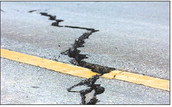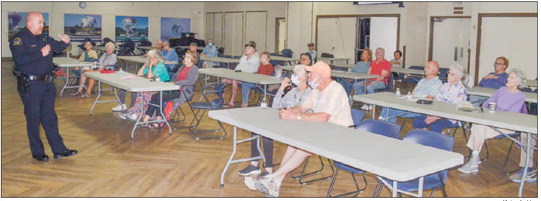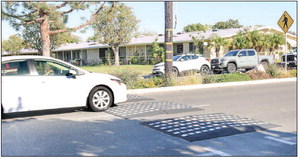Stay prepared for emergencies: Great California ShakeOut is today


EARTHQUAKE PREPAREDNESS
Every Leisure World shareholder is encouraged to participate in this year’s ShakeOut by practicing “Drop, Cover and Hold On” exercises today, Oct. 19, at 10:19 a.m.
The ShakeOut began in California in 2008 as a drill designed to educate the public about how to protect themselves during a large earthquake, and how to prepare for disasters. The Great Shake-Out earthquake drills are now held in in all U.S. states and some territories.
An earthquake is a sudden, rapid shaking of the ground caused by the shifting of rocks deep underneath the earth’s surface.
Earthquakes can happen without warning and can result in injuries and damage to property and roads. Earthquakes can cause fires, tsunamis, landslides or avalanches. While they can happen anywhere, some areas are at higher risk for earthquakes, including the entire state of California.
If an earthquake happens, protect yourself right away:
• If you are in a car, pull over and stop. Set your parking brake.
• If you are in bed, turn face down and cover your head and neck with a pillow.
• If you are outdoors, stay outdoors away from windows if possible.
• Do not get in a doorway.
• Do not run outside. Stay safe during an earthquake: Drop, Cover and Hold On
• Drop: Wherever you are, drop down on to your hands and knees. If you’re using a wheelchair or walker with a seat, make sure your wheels are locked and remain seated until the shaking stops.
• Cover: Cover your head and neck with your arms. If a sturdy table or desk is nearby, crawl underneath it for shelter. If no shelter is nearby, crawl next to an interior wall (away from windows). Crawl only if you can reach better cover without going through an area with more debris. Stay on your knees or bent over to protect vital organs.
• Hold On: If you are under a table or desk, hold on with one hand and be ready to move with it if it moves. If seated and unable to drop to the floor, bend forward, cover your head with your arms and hold on to your neck with both hands.
Prepare before an earthquake The best time to prepare for any disaster is before it happens.
• Practice “Drop, Cover and Hold On” with family and coworkers.
• Secure heavy items in your home like bookcases, refrigerators, televisions and objects that hang on walls. Store heavy and breakable objects on low shelves.
• Create a family emergency communications plan that has an out-of-state contact. Plan where to meet if you get separated.
• Make a supply kit that includes enough food and water for at least three days, a flashlight, a fire extinguisher and a whistle.
Stay safe after an earthquake If an earthquake has just happened, there can be serious hazards such as damage to the building, leaking water lines, or downed power lines.
• Expect aftershocks to follow the main shock of an earthquake.
• Check yourself to see if you are hurt and help others if you have training. Learn how to be the help until help arrives.
• If you are in a damaged building, go outside and quickly move away from the building. Do not enter damaged buildings.
• When trapped, protect your mouth, nose and eyes from dust. Send a text, bang on a pipe or wall or use a whistle instead of shouting to help rescuers locate you.
• Text messages may be more reliable than phone calls.
• Once you are safe, listen to news reports for information and instructions via batteryoperated radio, TV, social media or from cell phone text alerts.
• Be careful during postdisaster cleanup of buildings and around debris. Do not attempt to remove heavy debris by yourself. Wear protective clothing, including a long-sleeved shirt, long pants, work gloves and sturdy, thick-soled shoes during cleanup.
For more information, visit https://www.shakeout.org/california/.

During an earthquake, people should drop, cover and hold on. For people who are wheelchair-bound, the proper protocol is lock, cover and hold on.



